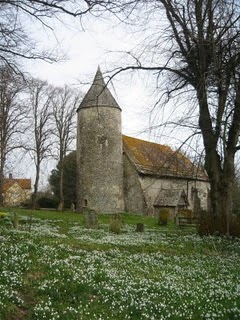Falling for the South Downs
A tribute to our southern National Park
The Devil’s Dyke, on a sunny Saturday morning in May, is probably not the best introduction to the South Downs. People sit impatiently in their cars on the approach road, waiting for a free spot in the vast concrete car park. Ice cream vans, motorbikes and squawking children drown out any sounds of nature, although the wildlife undoubtedly knows to leaves early. This was my first experience of the South Downs, and it left me distinctly underwhelmed – was it really set to become our newest National Park?

Ditchling Beacon, the second attempt at some peace in the countryside, was not much better. A smaller car park, but this only seemed to make those queuing to get in more frustrated. Several people who had made it were indulging in that peculiarly British pastime, the in-car picnic. Why sit outside in the sunshine when you can gaze at the view through your windscreen? And all this weekend disturbance could easily be avoided; both of these popular spots are well served by buses from Brighton.
This was not what I was hoping for from my new walking playground. Before reluctantly moving to Brighton, I had spent nine months in Aberfoyle, near Scotland’s Trossachs, with the ever-changing views of Ben Lomond to cherish each morning. This was followed by a year in Lancaster, with its easy access to the Lakes and Yorkshire Dales. A humble line of chalky hills, spluttering to a high point of 280m, offered little potential excitement. There’s no doubt about it; I was pining for these places, and the South Downs were bearing the brunt.
But I am not the type to nurture a grievance after the eighteenth heartfelt rant. Joining the local Duke of Edinburgh’s Award group as a leader meant regular weekends in the Downs, discovering new places and unexpected delights: Beachy Head, with its dramatic, plunging cliffs; the glorious Arun Valley and its varied birdlife; Cuckmere Haven, perfect for (outdoor) picnics, and the nearby Friston Forest. Maybe not household names, but they carry the same importance to local people as the more exalted walking regions to the north.
The South Downs has another advantage over some of these regions; every section of its 100 miles is accessible without a car. The towns and villages that nestle either side of the ridge are almost all well served with buses or trains. This includes locally run, walker-friendly services such as the Cuckmere Community Bus. This multitude of start and finish points, combined with the geography of the Downs, makes it ideal for linear car-free walks; start at one village, up onto the ridge, then down again once you’re done for the day.
After five years of learning to love the South Downs, I found, with no little surprise, that I had a favourite walk here – Southease to Lewes, via Highdole Hill. It doesn’t make my top 20 walks, maybe not even the top 50, but a day of gentle ups and downs in one of the quieter sections of the Downs gets all the right muscles twitching. It is also one of the few places in the southeast of England where you can escape the crowds, stretch your legs, and appreciate the sounds of cows and seagulls instead of mobile phones and traffic. And for that alone, it deserves a little recognition.
Southease to Lewes
Southease Station is the perfect place to begin a car-free walk. No café, no car parks and usually no other passengers alighting, and the footpath starts at the end of the platform. How’s that for accessibility?

A short distance from here, over the old wooden bridge that spans the River Ouse, is the village of Southease, and the walk’s first highlight. St Peter’s Church was built in the early 12th Century, and is a fine example of the architecture of this time. It’s well worth exploring if you are in no rush to reach the hills.
Cross the road just out of Southease and a footpath takes you right into the South Downs Way. There’s no fixed route to follow – head along the secluded Breaky Bottom, or climb up to Highdole Hill for views over Rottingdean and the English Channel. The walk is also dotted with those features that colour a walk; look out for the path-side monument near Whiteway Bottom, in memory of another admirer of these hills. A little further along is the mysterious collection of farm buildings the southern side of Castle Hill Nature Reserve, disused except for the crows and ravens who watch as you pass.
At Castle Hill, head briefly along the South Downs Way towards Kingston near Lewes. The Juggs Inn is a handy place to refresh before the final couple of miles to Lewes. In spring evenings, you may even be treated to a display of Morris dancing in the road next to the beer garden. Mock ye not this splendid tradition; our ancient Isles would be a more cheerless place without these grown men and women who, for our entertainment, hit sticks together and wear bells round their ankles.
